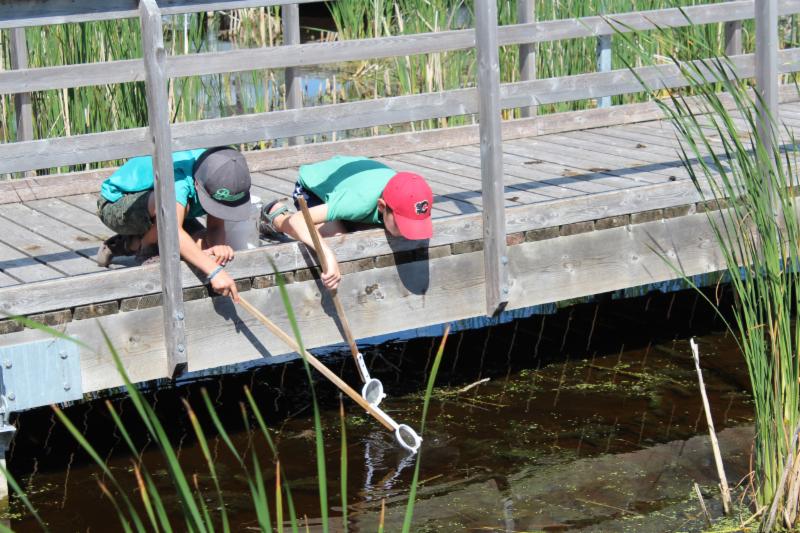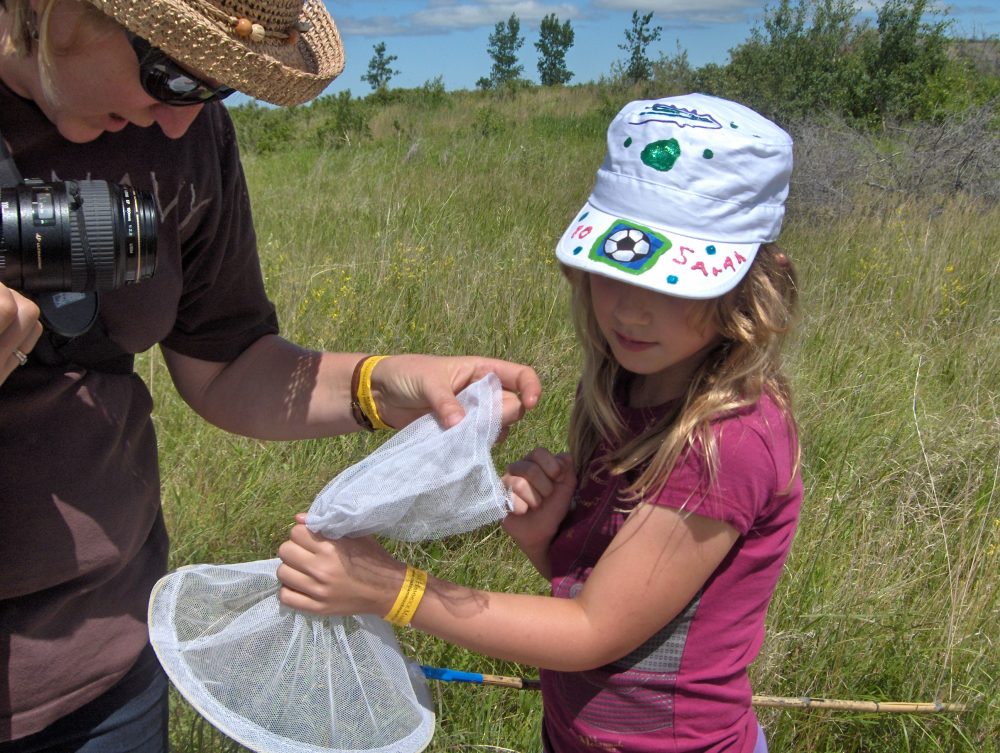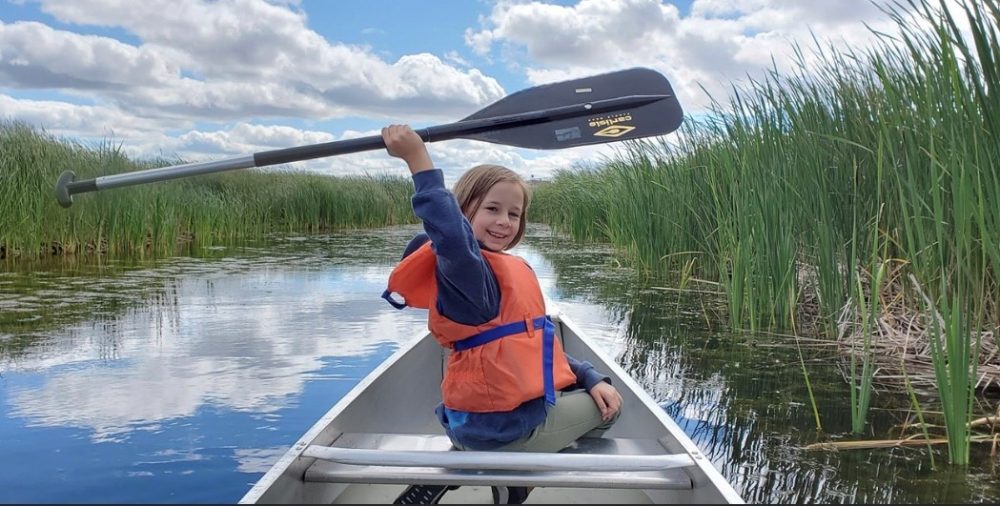Type and press “enter” to search
Looking for some fun and engaging activities for the whole family this summer? Make your way to the Wetland Discovery Centre at Oak Hammock Marsh where you can find something for everyone.
 Critter dipping, an all-time favourite, consists of exploring a marsh and identifying various small aquatic creatures using a dip net and a pail. You can scoop up samples of water and then examine the collected specimens to determine their species with the help of a magnifying cube or with our Micro-Video, a large microscope that provides an incredible close up of the little creatures.
Critter dipping, an all-time favourite, consists of exploring a marsh and identifying various small aquatic creatures using a dip net and a pail. You can scoop up samples of water and then examine the collected specimens to determine their species with the help of a magnifying cube or with our Micro-Video, a large microscope that provides an incredible close up of the little creatures.
During critter dipping, you may catch a wide range of aquatic insects, small fish, tadpoles, snails, shrimp, and more. It’s amazing to see all the critters living under the water of the marsh. By observing these tiny critters closely or capturing them temporarily for identification, people can gain insights into the biodiversity and ecological health of the marsh.
Bird banding is another way to look at the marsh’s inhabitants. Birds are caught using nets strung between trees. The nets have very fine mesh and are invisible to the birds. Once caught, they are brought to the bird banding station where they will be identified, measured, weighted, aged, sexed, and banded. The banding involves attaching small, uniquely numbered metal band to the bird’s leg. These bands have information about the organization or researcher responsible for the banding, as well as a unique identification number.
Bird banding serves several purposes. Firstly, it helps researchers track individual birds and monitor their movements, behavior, and survival rates. When a banded bird is recaptured or found dead, the band can be read to gather valuable information about its life history.
Additionally, bird banding contributes to population and migration studies. By banding birds in one location and recording band recoveries or sightings in other locations, researchers can estimate population sizes, understand migration patterns, and learn about the connectivity between different habitats.
Bird banding data can provide insights into bird demographics, longevity, site fidelity, breeding success, and the overall health of bird populations. It also facilitates international collaboration, as bird banding records can be shared across countries to track the movements of migratory birds.
 There are many other ways to explore the marsh and its inhabitants this summer. Daily wildlife surveys will help visitors find and identify not only the birds but also the many species of fish, frogs, butterflies and dragonflies found at Oak Hammock Marsh. Speaking of dragonflies, there are approximately 100 species of dragonflies found in Manitoba and the Marsh is home to more than half of these species. For those interested in learning more about these fascinating creatures, we are hosting our Annual Dragonfly Festival on July 22 and 23 where participants can join dragonfly safaris with our experts. Ducks Unlimited Canada is also encouraging people to log their dragonfly observations on iNaturalist as part of their Project Dragonfly, a citizen science project to help raise awareness for the need for wetland conservation.
There are many other ways to explore the marsh and its inhabitants this summer. Daily wildlife surveys will help visitors find and identify not only the birds but also the many species of fish, frogs, butterflies and dragonflies found at Oak Hammock Marsh. Speaking of dragonflies, there are approximately 100 species of dragonflies found in Manitoba and the Marsh is home to more than half of these species. For those interested in learning more about these fascinating creatures, we are hosting our Annual Dragonfly Festival on July 22 and 23 where participants can join dragonfly safaris with our experts. Ducks Unlimited Canada is also encouraging people to log their dragonfly observations on iNaturalist as part of their Project Dragonfly, a citizen science project to help raise awareness for the need for wetland conservation.
 Of course, no visit to Oak Hammock Marsh would be complete without a canoe excursion, either guided or self-guided. With 300 species of birds, numerous mammals, amphibians, reptiles, and fish, and of course, countless invertebrates, the marsh offers something for every wildlife enthusiast in your family.
Of course, no visit to Oak Hammock Marsh would be complete without a canoe excursion, either guided or self-guided. With 300 species of birds, numerous mammals, amphibians, reptiles, and fish, and of course, countless invertebrates, the marsh offers something for every wildlife enthusiast in your family.